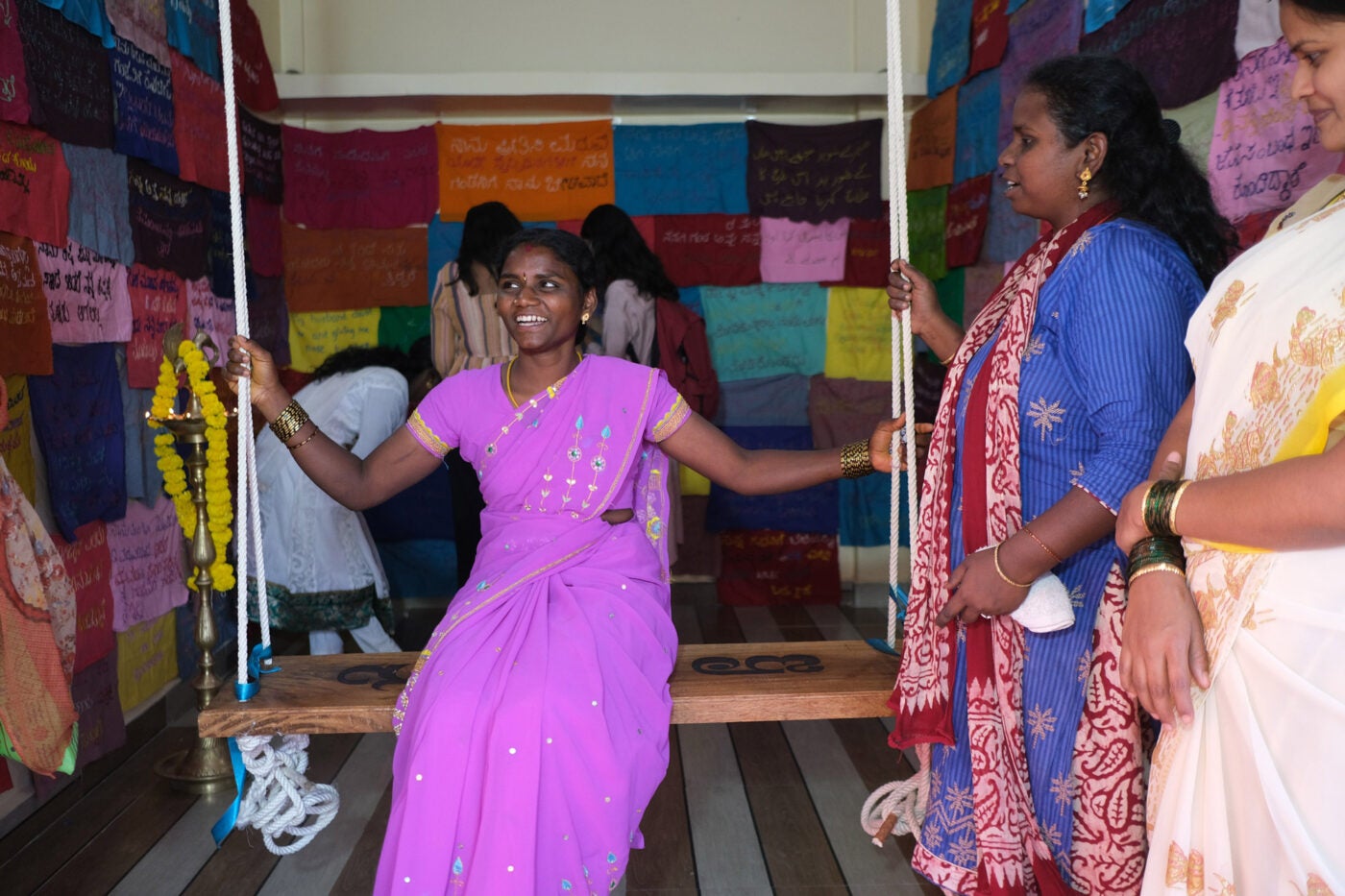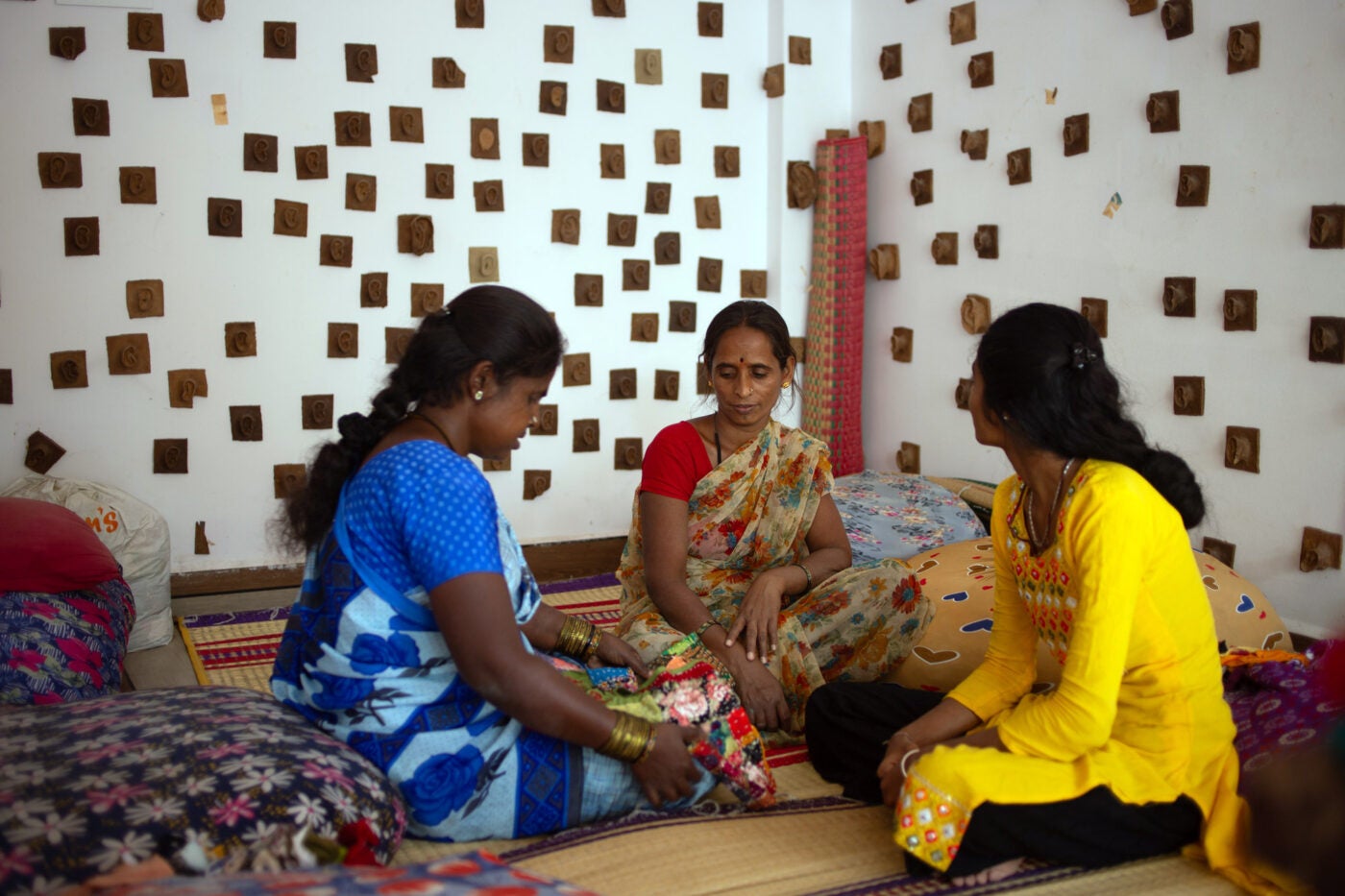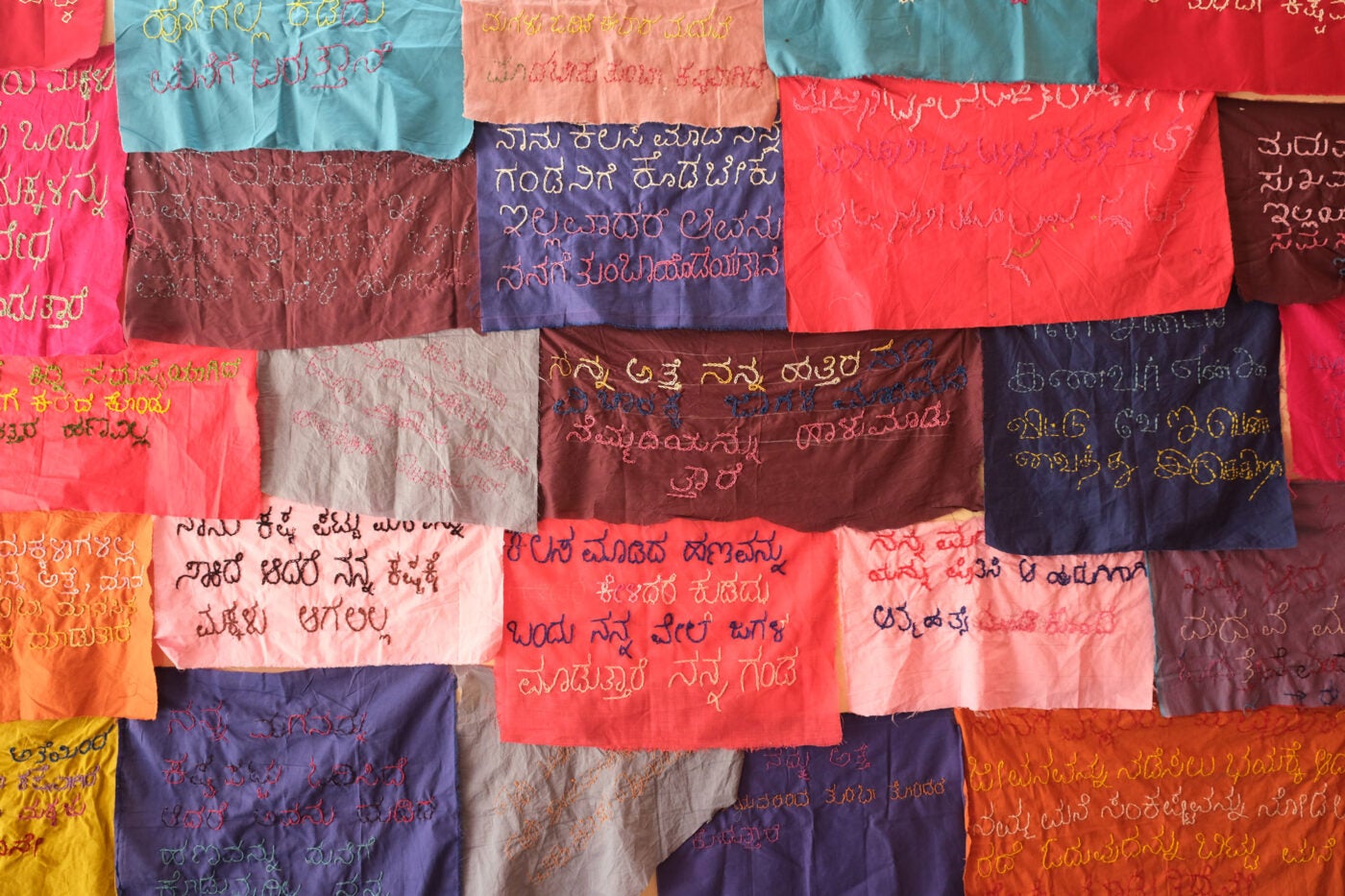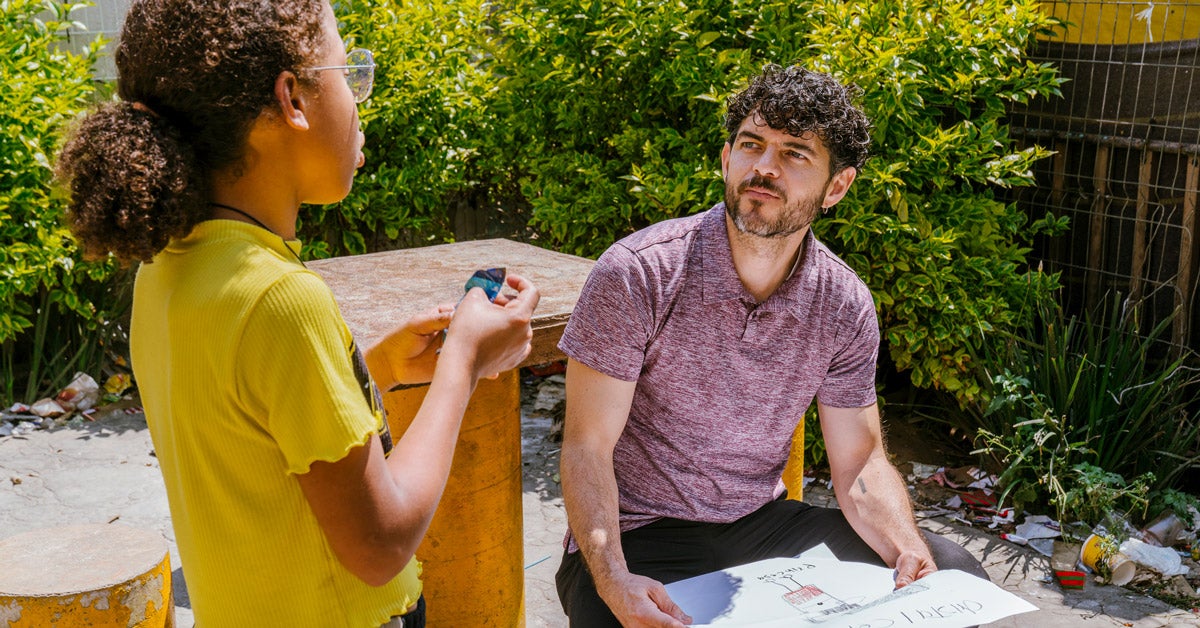
Ideas
A place for Indian women to do… nothing
In a small shutter shop behind a crowded railway station in Bengaluru, if you know where to look, you will find the rarest of rare things: Indian women at leisure.
Public spaces in India have always been hostile to women. In 2021, as intimate partner violence peaked during COVID, private spaces became hostile, too. That’s when Indu Antony rented the shop, called it Namma Katte (“Our Space” in Kannada, the local language), and invited women to do… nothing.
Sign up for Harvard Public Health
Delivered to your inbox weekly.
“Initially, we would just sit together,” says Antony, an artist-in-residence at the Museum of Art and Photography in Bengaluru. Her project “Mindscapes Bengaluru” put mental health in conversation with art and public spaces. “I wanted to make sure that women doing nothing becomes a part of our public memory,” she told me over a Zoom call. She imagined a space where women did not have to be constantly productive nor looking over their shoulders when out in public. At Namma Katte, leisure is the organizing principle—and a political act of resistance.
Though women outnumber men for the first time in Indian history, women continue to be a gendered “minority,” struggling on a daily basis to occupy public spaces, especially after dark. Antony’s art is changing that reality in small and unexpected ways. Allowed to be at leisure, women started producing art that explored themes of mental health, grief, sisterhood, and safety.

Women chatting at Namma Katte after a day at work.
Photo: Indu Antony

Bhagya (left), who manages the Namma Katte space, teaches women about stitching on a blouse in March 2024. The walls now display a new phase of the ongoing art project.
Photo: Indu Antony
Antony started the project with no real end goal. She liked to knit, so she started doing that with the women who wandered in. Then one woman asked if she could stitch something she was upset about. When she stitched the words “I cried a lot when he beat me yesterday,” she opened the floodgates for other women to use knitting as a medium to share their stories.
The women condensed their stories to a line or two and recorded them on a piece of blouse fabric:
“I felt uncomfortable when my husband’s brother peeped into the bathroom.”
“He drank a lot yesterday.”
“I woke up after the acid attack knowing that I lost one eye.”

Messages hand-stitched by women at Namma Katte. Some read: "When I ask for money from my husband he beats me up;" "When I don't give the money I made through my work to my husband he abuses me;" "My mother-in-law tortures me a lot;" "Because I have three daughters my husband beats me a lot." Textiles such as these were later stitched together as a skirt and exhibited at the Museum of Art and Photography in Bengaluru, India.
Photo: Vivek Muthuramalingam
Soon it snowballed into 547 stories. Around the same time, the Wellcome Trust, a health research-focused philanthropy, approached Antony for a public art project. She proposed Namma Katte. The stories were stitched onto a 23-foot-long skirt and displayed at the Museum of Art and Photography.
The textile exhibit—featuring stories of heartbreak and violence and scarcity and fear—has had a strong impact on the communities it holds a mirror to. In one case, four men tried to set fire to the exhibit. Antony was there and confronted them. “When I turned around, thirty women were standing behind me, ready to defend their space. I realized the landscape of Namma Katte had changed; women were starting to own up,” Antony says.
The space itself is still in use, something like the “room of requirement,” the secret room from the Harry Potter series that could provide anything students required of it at their moment of need. Women come together, hold hands, cry, mourn, share, and laugh. There’s a swing and back scratcher too—for those itches you can’t reach by yourself.
The exhibit, displayed between April and August 2023, has grown since Antony conceived it. Next month, Namma Katte will travel to the State of Fashion biennale in the Netherlands, with new stories and a fresh textile exhibit that combines mental health with the water crisis faced by the women of Bengaluru.
Top image: A woman enjoys the swing on the opening day of Namma Katte, February 28, 2022.The swing is meant to make the space feel like a place where women can relax. The inscription says, “Come, swing.”
Photo: Vivek Muthuramalingam




